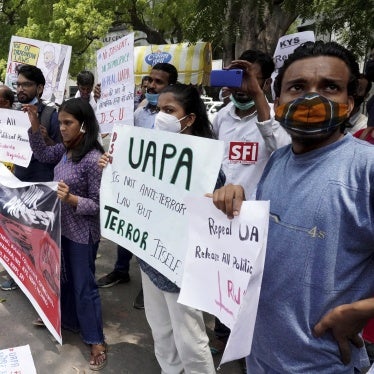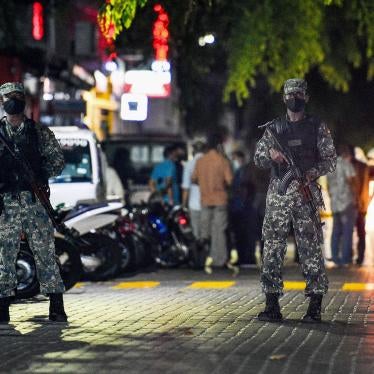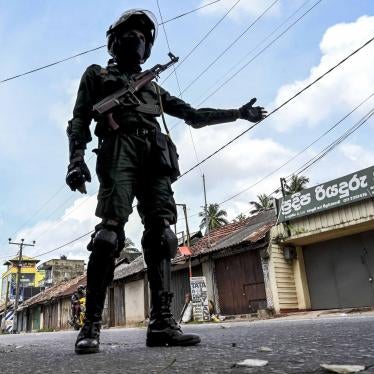(Washington, DC) – The United States government should undertake a thorough and impartial investigation into new allegations of US complicity in the killings of 18 men in Afghanistan, Human Rights Watch said today. An article published on November 6, 2013, by Rolling Stone magazine contains new information that US personnel were implicated in the killings in Nerkh district, Wardak province, which occurred in late 2012 and early 2013. US personnel who participated in or were otherwise responsible for the abuses should be criminally prosecuted.
The US has a meager record of investigating and prosecuting human rights abuses allegedly committed by its forces during its 12-year military presence in Afghanistan, Human Rights Watch said. Although several high-profile cases have resulted in convictions and substantial punishments, many other serious cases have resulted in minimal or no charges, or in disproportionately light punishments.
“The Nerkh incidents should be investigated rigorously, impartially, and transparently,” said Andrea Prasow, senior counterterrorism counsel and advocate at Human Rights Watch. “While it is clear that crimes occurred, US authorities need to establish what exactly happened and who is responsible.”
Alleged Killings in Nerkh
Allegations of killings in Nerkh first emerged in November 2012, with many local residents claiming they were connected to operations by a new US Special Forces unit in the district, known as ODA 3124. In February, the body of a man named Nasratullah was found in Nerkh with his throat slit. His family said that US forces had earlier arrested Nasratullah. After protests about the abuses erupted in Wardak, Afghan President Hamid Karzai called for US forces to leave the province.
In April, ODA 3124 withdrew from Nerkh. Shortly thereafter, according to Afghan government accounts, a shepherd located human remains near the team’s former base perimeter, prompting villagers to dig in the area. Over the following two months, human remains were found in five other locations near the base, some intact, some only body parts. Afghan authorities, using clothing and possessions found at the sites, identified the remains as belonging to 10 Afghan men from Nerkh district who had earlier been taken into custody by US forces. According to Afghan government documents, at least 8 other men had been killed in operations linked to ODA 3124 – a total of 18 deaths.
In the following months, family members of the 10 men whose bodies were found have given consistent accounts of the men’s arrests to the United Nations, Afghan officials, and journalists. The Rolling Stone article features accounts from Afghan officials, relatives and neighbors arrested with the people who “disappeared” or were killed, and Afghans who worked with ODA 3124. In several cases, detainees held by ODA 3124 described being beaten severely by US forces as well as by an Afghan interpreter known as Zikria Kandahari who was working with the unit. In one case, a man detained by US forces said he witnessed Kandahari execute his neighbor, a man named Gul Rahim, in front of US personnel, who did nothing to stop him and did not object afterward. The man also said that US military personnel and Kandahari beat him severely.
After the human remains in Nerkh began to be unearthed in April, US officials denied US involvement to several media outlets, contending that Kandahari alone committed the disappearances and killings. However, the US military opened a criminal investigation in July, after the International Committee of the Red Cross provided new evidence regarding the deaths and disappearances, military sources told Rolling Stone. UN officials also raised concerns about the case with US officials.
Several witnesses and family members who spoke with UN officials and journalists have indicated that US investigators have not yet interviewed them. To ensure thorough investigations in Wardak, investigators will need to meet with Afghan witnesses and family members of victims, Human Rights Watch said.
“The US will need to do more than open an investigation,” Prasow said. “The US government needs to follow through with real evidence-gathering to uncover the truth, and bring to justice all those who are responsible for crimes.”
Afghan authorities arrested the interpreter, Kandahari, in July. In an interview in jail, he told Rolling Stone that he had not committed abuses or killings and that ODA 3124 was responsible for the abuses. His assertions are contradicted by information detailed in the Rolling Stone article and in UN reporting, but US explanations placing all of the blame on Kandahari for the incidents also lack credibility, Human Rights Watch said.
Even if Afghan personnel are found to have carried out the killings and mistreatment, US personnel can bear criminal responsibility for war crimes and other violations of international law if they aided and abetted, ordered, or knew or should have known about crimes committed by their subordinates and took no action, Human Rights Watch said.
“Simply blaming one Afghan interpreter for 18 deaths discredits the US commitment to get at the truth,” Prasow said. “The US investigation should go beyond the people who carried out the killings and examine who may have assisted in the crimes or failed to take action to stop it.”
The US Record: Poor Accountability for Military and CIA Abuses
The alleged US involvement in the killing of detainees in Wardak is only the latest among the allegations – now numbering in the hundreds – of US participation or complicity in the abuse of detainees over the last decade in Afghanistan, Iraq, at Guantanamo Bay, and in CIA custody in secret prisons.
Although some high-level and egregious cases have led to convictions and severe punishments, many other cases have been closed with no charges, or have focused only on the responsibility of direct perpetrators, not the commanders who may have authorized or allowed the crimes to occur. Often, cases have resulted in few convictions, and criminal sentences that are disproportionately low considering the severity of the crime.
For instance, the November 15, 2005, incident near Haditha, Iraq in which 24 civilians were killed – including women, children, and a person in a wheelchair – resulted in 2012 in only one conviction, which carried only a sentence of reduction in rank.
Another example is a March 2007 incident in Jalalabad, Afghanistan, in which US Marines fleeing an ambush indiscriminately fired on people along a lengthy stretch of road, killing 19 civilians, including a 16-year-old girl and a 75-year-old man. Although the unit was withdrawn from Afghanistan and an investigation opened, no one was ever charged.
In a more recent set of incidents, several members of a US Army unit in Maiwand district in Kandahar in 2010 were implicated in intentional killings of several civilians, among other abuses, and were charged and convicted, some sentenced to substantive terms. But the commander of the units was never charged even though an extensive unit-wide investigation revealed that the commander of the unit had encouraged and condoned abusive behavior.
Even after the infamous Abu Ghraib abuses in Iraq 10 years ago, US authorities only filed charges against members of the military police, not military intelligence officers or any senior commanders at the facility despite evidence that some of them knew of the abuse and did nothing to stop it.
In a 2006 report Human Rights Watch examined hundreds of cases of US involvement in detainee abuse and homicide – many of which went uninvestigated, unprosecuted, or unpunished. Human Rights Watch provided additional examples of impunity at higher levels of government in a 2011 report outlining torture and other abuses involving the military and CIA.
In 2012, Human Rights Watch documented additional cases of abuse of detainees in CIA custody in Afghanistan, uncovering the cases of several Libyans who had been abducted, abused and then unlawfully rendered back to Libya. The report uncovered a new case of waterboarding as well as other cases of water torture. Human Rights Watch issued earlier reports on CIA abuses in 2004, 2005, 2007, and 2008.
Human Rights Watch noted that at least some problems with the US military’s record on impunity for abuse stem from systemic flaws in the US military justice system, which lacks a unified prosecutorial system and too easily allows senior commanders to cover up culpability, especially of higher level officials.
At the same time, Human Rights Watch noted, the US record of impunity for detainee abuse extends beyond the military justice system. In 2012, the US Justice Department closed without charges its investigation into the deaths of two detainees in secret CIA custody, led by a special prosecutor, John Durham. The investigation had originally encompassed the cases of approximately 100 detainees who had been held in CIA custody, but, in 2011, the Justice Department narrowed its focus to only two.
No US personnel or officials have ever been charged in connection with abuses at Guantanamo Bay or in secret CIA prisons.
“It is hardly a surprise that serious abuses keep occurring when the US so rarely punishes those who commit them,” Prasow said.








